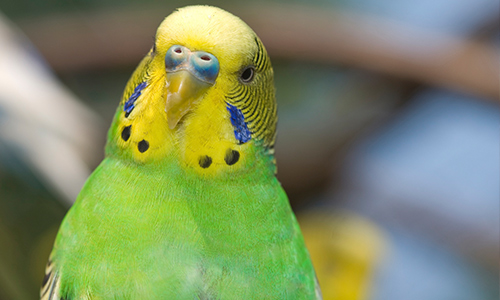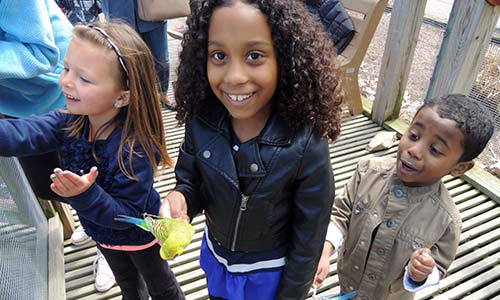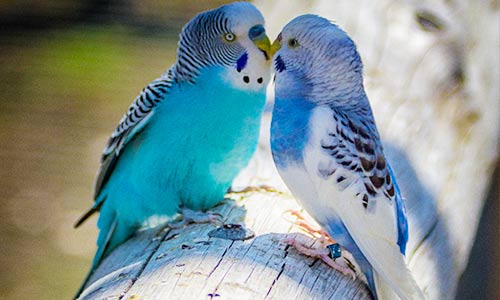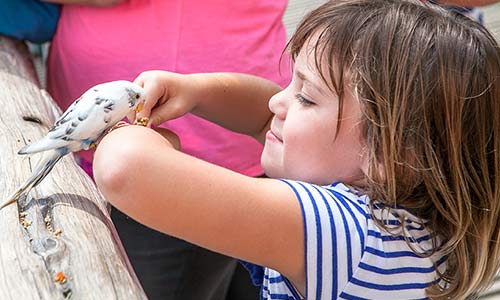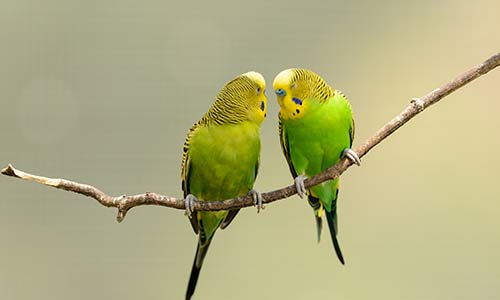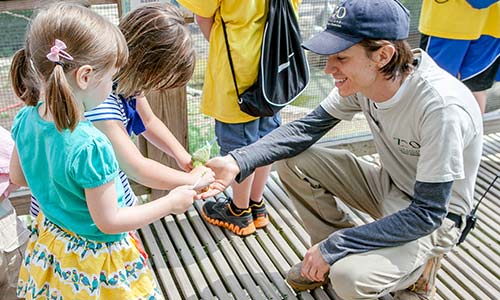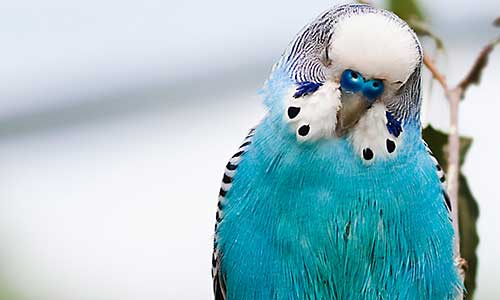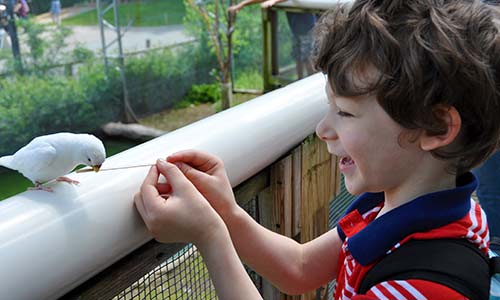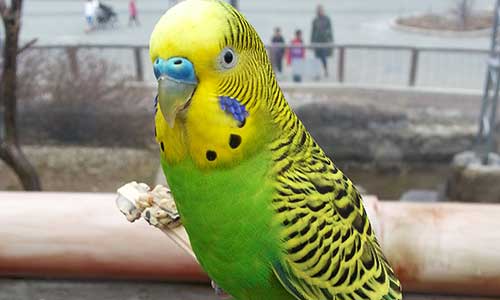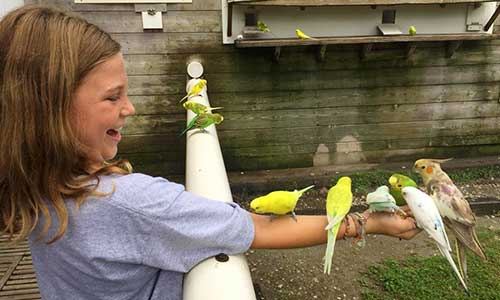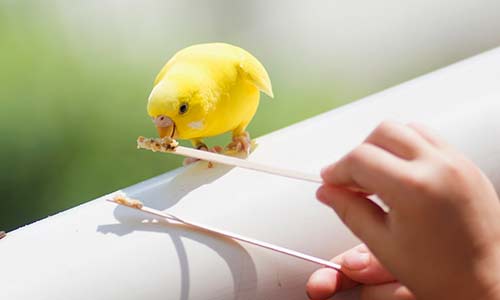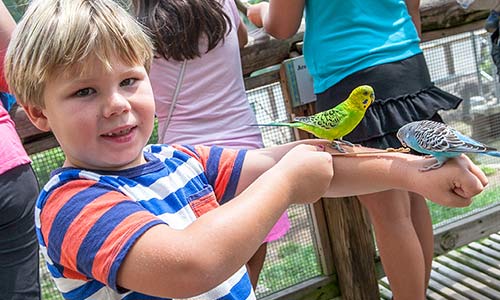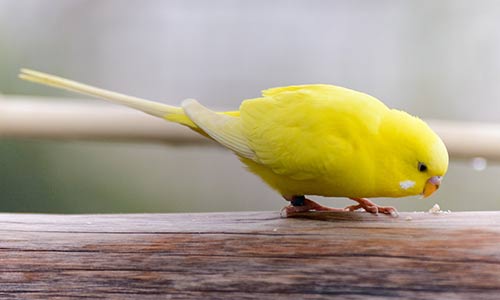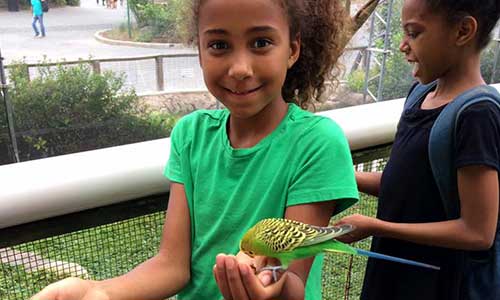Budgerigar
Melopsittacus undulatus
| ⚠️ Animal Alert Aussie Aviary is now closed for the season. Visit our Winter Visits page to learn more about the amazing animals you can see during the winter! |
About the Budgerigar

Geographic Range:
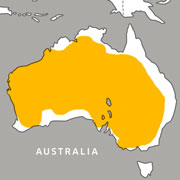
Class: Aves
Order: Psittaciformes
Family: Psittacidae
Genus: Melopsittacus
Species:undulatus
The “budgie" as it is affectionately known, is a small, long-tailed parrot. The bird is naturally green and yellow, although breeders have created a rainbow of blues, whites, yellows and grays. The male budgie has a blue cere (skin area above the beak) and the female’s is brown. The budgie is a nomadic, social creature that lives in flocks of up to 20 birds.
Budgerigar Facts
Appearance:
“Budgies” are small, long-tailed parrots. They're naturally green, yellow and black. Breeders have created a rainbow of blues, whites, yellows and grays. The male budgerigar has a blue nose while the female budgie's nose is brown in color.
Size:
Length: 6-8 inches
Wingspan: 10-14 inches
Weight: 1-1.5 ounces
Diet:
They're omnivores, eating seeds, fruit, berries, and insects.
Reproduction:
Budgies breed during the wet season of their region. In northern Australia, this is between June and September. In southern Australia, it's between August and January. Budgerigars lay four to six eggs that incubate for 17-19 days. The male helps take care of the young for about 30 days after they hatch.
Behavior:
Budgies are nomadic and move to find food and shelter in their dry habitats. They live in flocks that vary in size depending on the local availability of food. They use their beaks, tongue and feet to line up their food. They see into the ultraviolet spectrum of light and this enhances their bright coloration.
Habitat/Range:
Budgerigars live in the arid regions of Australia.
Median Life Expectancy:
5-8 years
You Can Find This Animal in the Aussie Aviary (Seasonal)
Feed the Budgies!
Purchase a seed stick and get ready for an up-close encounter with some winged friends in this free-flight exhibit! Learn more
Color-Coded
You can tell male from female budgies by the color of their ceres (the skin just above their beak). Male budgies have dark blue ceres, while breeding females have tan to brown ceres.
You might also like
At Franklin Park Zoo:
At Stone Zoo:

